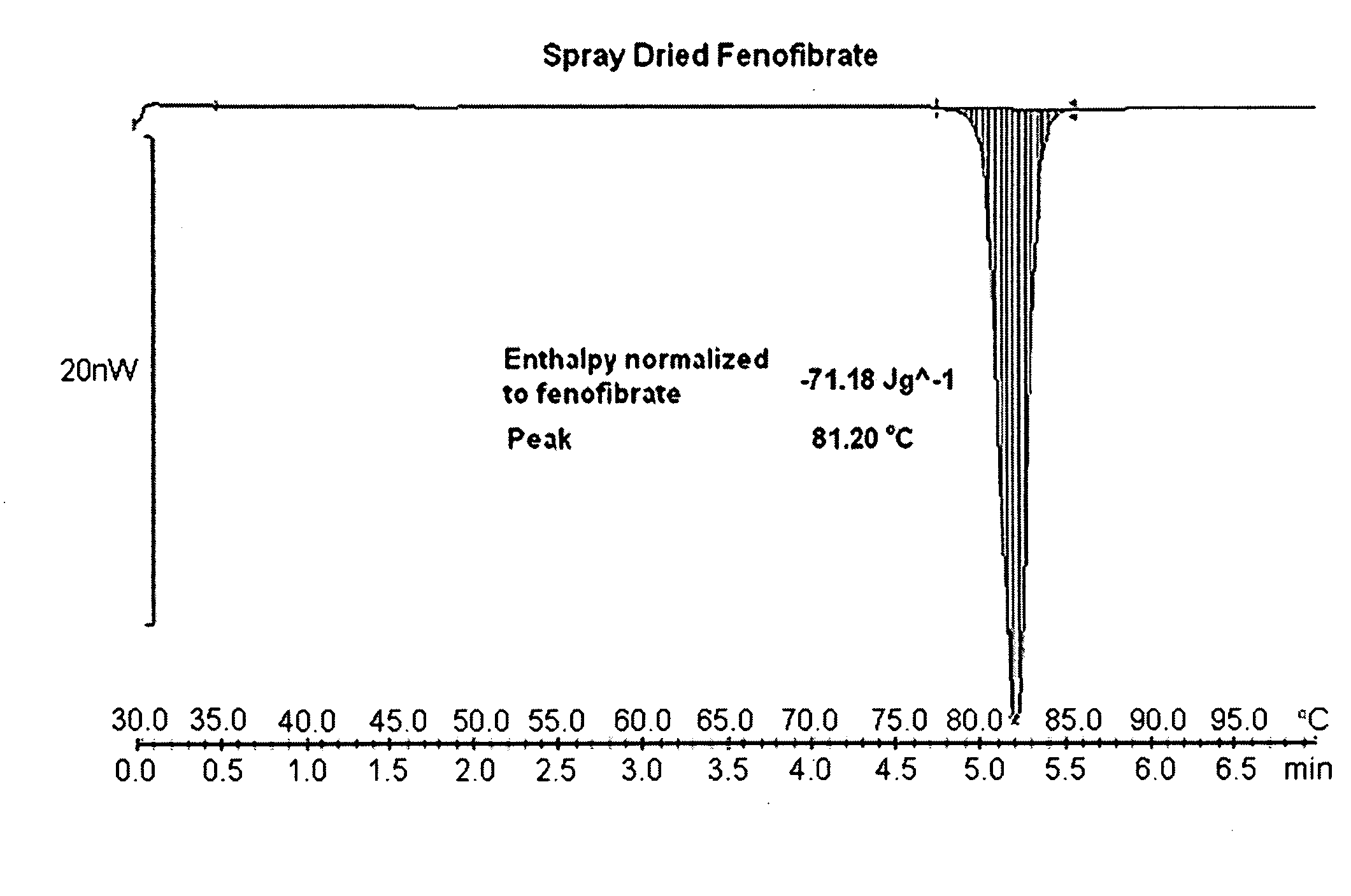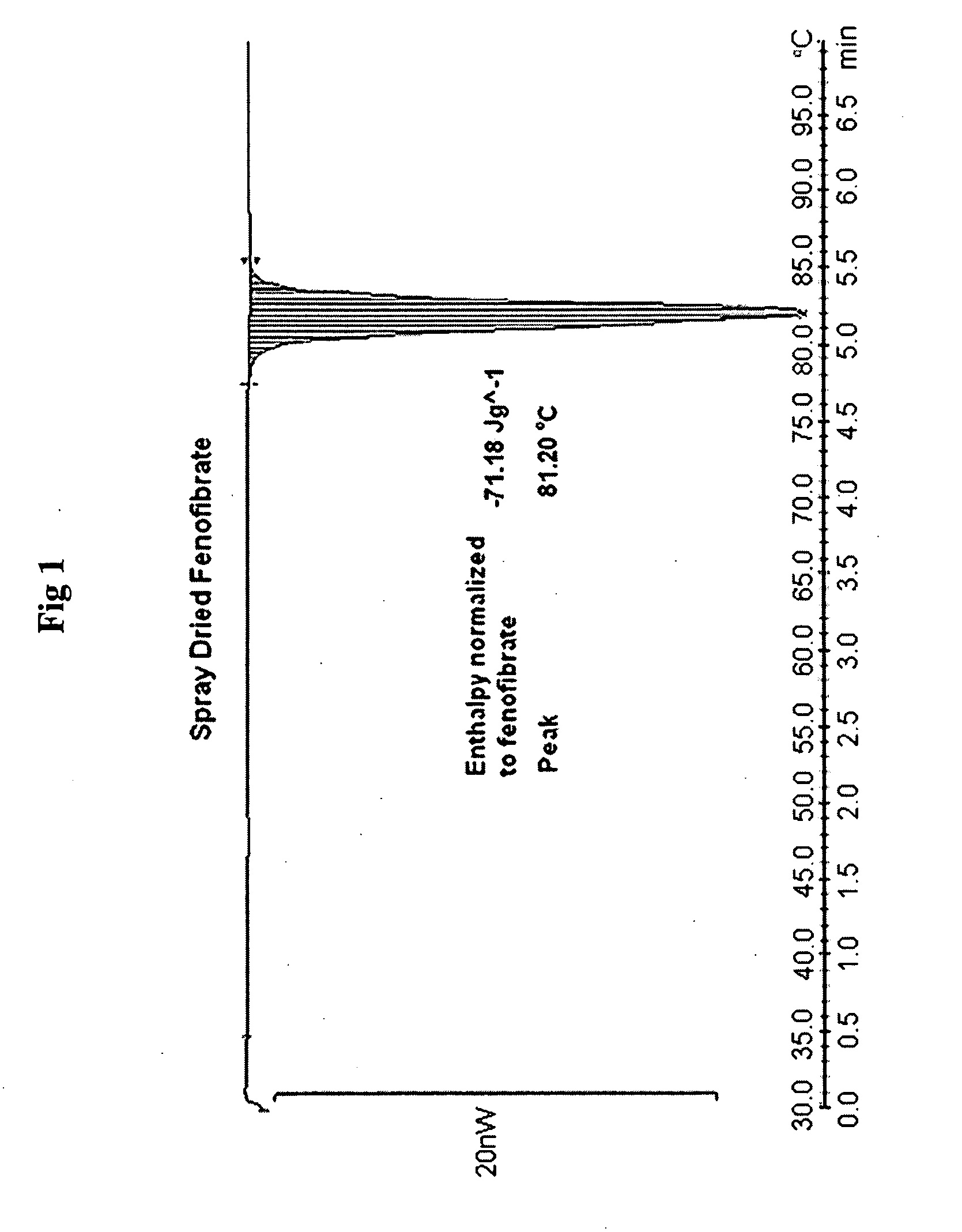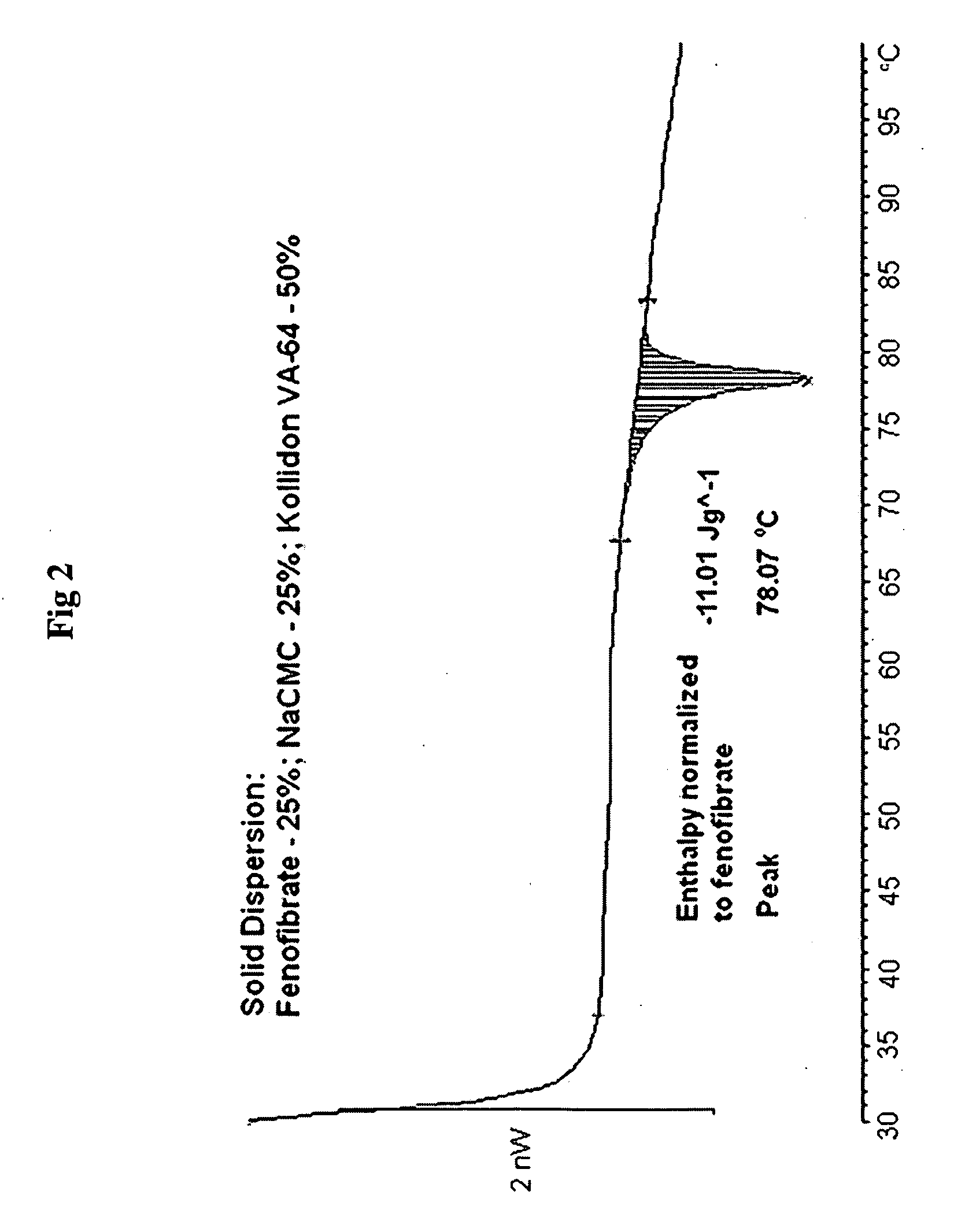Compositions comprising lipophilic active compounds and method for their preparation
a technology of lipophilic active compounds and compositions, which is applied in the direction of drug compositions, dispersed delivery, immunological disorders, etc., can solve the problems of poor fat solubility, major obstacles to the development of therapeutic agents, and a significant challenge for the pharmaceutical industry
- Summary
- Abstract
- Description
- Claims
- Application Information
AI Technical Summary
Benefits of technology
Problems solved by technology
Method used
Image
Examples
example 1
Spray-Dried Fenofibrate
[0229]Fenofibrate (1.0 g) was dissolved under stirring at 300 rpm in 17.6 gl of n-propanol at 45° C. Water (18 g) water was added to the fenofibrate solution at a feeding rate of 1 ml / min, under stirring at 300 rpm and at temperature 45° C. The resultant clear homogeneous solution was placed to the bath at 55° C. and spray dried using Buchi Mini Spray Drier with inlet air temperature 78° C. and outlet temperature 50° C., thus obtaining a powder. This powder was used in comparison studies hereafter.
example 2
Formulation of Fenofibrate with NaCMC
[0230]Drug solution: Fenofibrate (1.0 g) was dissolved under stirring at 300 rpm in 89 g of n-propanol at 25° C.
[0231]Polymer solution: NaCMC (3.0 g) was dissolved under stirring at 300 rpm in water (100 g) at 43° C.
[0232]The drug solution was added to the polymer solution at a feeding rate of 2 ml / min, under stirring at 300 rpm and at temperature 45° C., then temperature was elevated to 56° C. The resultant clear homogeneous solution was spray dried from hot (50-55° C.) solution, using Buchi Mini Spray Drier with inlet air temperature 98° C. and outlet temperature 64° C., thus obtaining a powder. This powder was used in comparison studies hereafter.
example 3
Formulation of Fenofibrate with Poloxamer 407
[0233]Drug solution: Fenofibrate (0.5 g) was dissolved under stirring at 300 rpm in 60 g of n-propanol at ambient conditions.
[0234]Polymer solution: Poloxamer 407 (1.5 g) was dissolved under stirring at 300 rpm in 75 g of water at ambient conditions.
[0235]The drug solution was added to the polymer solution at a feeding rate of 2 ml / min, under stirring at 300 rpm at temperature 25° C. The resultant clear homogeneous solution was spray dried using Buchi Mini Spray Drier with inlet air temperature 100° C. and outlet temperature 64° C., thus obtaining a viscous liquid, which forms a film on the cyclone after cooling. This film was removed and crushed using mortar and pestle. This powder was used in comparison studies hereafter.
PUM
| Property | Measurement | Unit |
|---|---|---|
| solubility | aaaaa | aaaaa |
| particle size | aaaaa | aaaaa |
| size | aaaaa | aaaaa |
Abstract
Description
Claims
Application Information
 Login to View More
Login to View More - R&D
- Intellectual Property
- Life Sciences
- Materials
- Tech Scout
- Unparalleled Data Quality
- Higher Quality Content
- 60% Fewer Hallucinations
Browse by: Latest US Patents, China's latest patents, Technical Efficacy Thesaurus, Application Domain, Technology Topic, Popular Technical Reports.
© 2025 PatSnap. All rights reserved.Legal|Privacy policy|Modern Slavery Act Transparency Statement|Sitemap|About US| Contact US: help@patsnap.com



